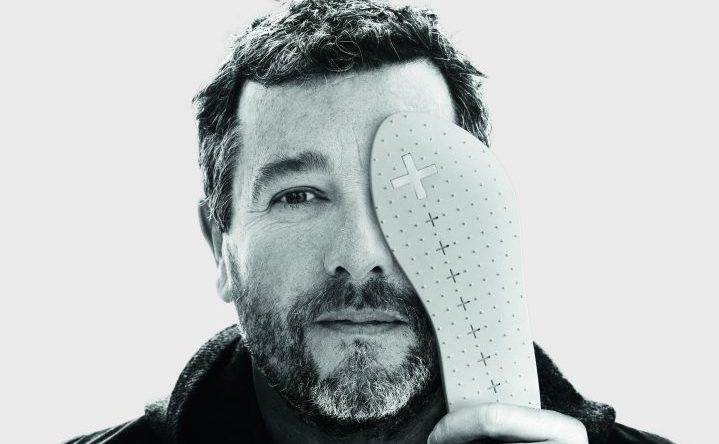Philippe Starck has designed all kinds of everyday objects over the course of his impressive career. Now he is presenting his first perfumes. Long overdue, as he says, and a way of bidding farewell to the constraints of materiality.
HE PROBABLY IS ONE of the most famous and most productive designers in the world. Philippe Starck has created over 10,000 designs, from mega yachts to lemon presses. Now the 69-year-old Paris native is adding a new facet to his body of work – with three fragrances that bear his name.
The designer doing scents – why was this of interest for you?
Philippe Starck: All my life, I’ve translated my dreams and visions into materiality. But actually I hate materiality and deep inside of me I always wanted to escape from it. Creating perfumes gives me the possibility to fulfil my dream of abstraction. Translating my intuitions, my visions into chemicals and perfumes is my favourite part of the creation process. Scents transport stories.

Which stories do you want to tell with your perfumes?
Even if they echo each other, the three fragrances have their own story to tell. We invented a new language, a new territory. Peau de Soie explores the mystery that is woman. It appears to be a female fragrance, but inside there beats an attractive, almost masculine heart. Peau de Pierre evokes an ambivalent masculinity; it smells like a male perfume, but within its core lies a female mystery. It’s a very complex perfume. And Peau d’Ailleurs is asexual; it is the smell of something or someone we don’t know yet. What I mean is that you don’t have to choose to be only a man or a woman, you can be something else, elsewhere. Each perfume represents a part of who I am, and of who we are. Depending on my mood, I wear the three of them.
STAY | Vienna House Eeasy Airpot Bucharest
How does that work: translating stories into scents and filling them into flacons?
I’ve had my own perfume organ ever since I was young, but I quickly realised I was not a master perfumer. So I needed professionals to realise this very personal project. I have been approached by several fragrance companies over the years, but I never felt the perfect match until I met PYD. With the three master perfumers Daphné Bugey, Annick Ménardo and Dominique Ropion, we invented a new language, a new creative process to translate my dreams, my visions, my explorations into fragrances. Through their personality and savoir-faire, my words became scents.
SHOP | BEAUTIK PROMENADA MALL
Calea Floreasca, nr. 246B
014476 Bucharest
www.beautik.ro/stores
Until you started creating perfumes, you worked exclusively with matter. What is especially important here for you?
I’ve always thought of the benefit my creation will bring to the person who will use it or who will go to the place I created. For me, creation must improve the lives of as many people as possible. I like to create scenarios where people can feel more beautiful, more confident, more in love. To design an object or a place, I use the same parameters: creativity, rigorousness, working on a political statement, sexual statement, ecology and so on. I am proud of my contribution to democratising design. For me, design has always been a political weapon to show something, a new path, a new proposal. My concept of democratic design is based on the idea of making quality pieces available at accessible prices to the largest number of people: to lower the price while increasing the quality. Now that this battle is won, I can focus on democratic ecology and democratic architecture, like the PATH project – Prefabricated Accessible Technological Homes.
You are known as a master of reduction. Is creating perfumes the ultimate form of reduction: bidding farewell to the material, to materiality?
The only thing I have ever wanted to challenge is materiality, which may sound odd coming from a designer, but it’s true. I was one of the first to work on transparency and to create transparent
furniture. When you create an object, you can’t reduce its materiality, its dimension and volume because you need them. However, you can choose to make it visible or not, and when it is transparent, you can decide to see it or not. Like with the chairs Louis Ghost and La Marie. This is a first step to dematerialisation. Now we can go further into the dematerialisation process.
FOR ME, CREATION MUST IMPROVE THE LIVES OF AS MANY PEOPLE AS POSSIBLE.